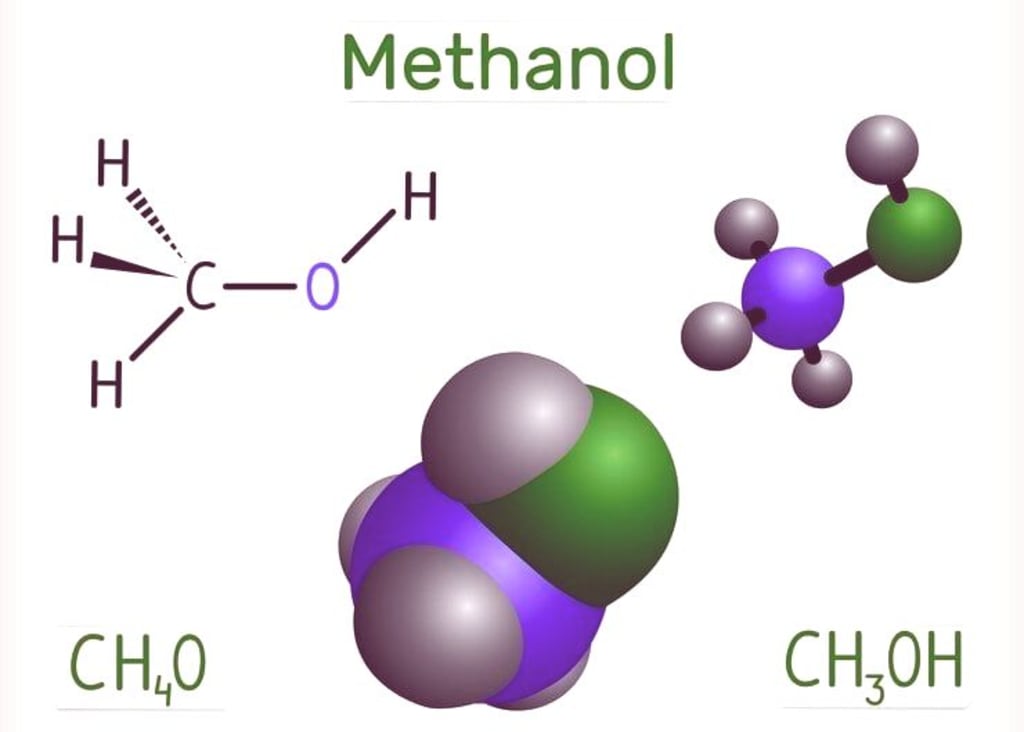Global Methanol Market Forecast to 2028: Natural Gas and Coal as Primary Feedstocks
Methanol Market worth $38.0 billion by 2028

Methanol, also known as methyl alcohol or wood alcohol, is a colorless, volatile liquid with the chemical formula CH3OH. It is the simplest alcohol, consisting of a methyl group (-CH3) linked to a hydroxyl group (-OH). Methanol is a versatile chemical compound with numerous industrial applications, ranging from fuel production and solvent manufacturing to pharmaceuticals and chemical synthesis. The global Methanol Market size is expected to grow from USD 30.9 billion in 2023 to USD 38.0 billion by 2028, at a CAGR of 4.2% during the forecast period.
Download PDF Brochure: https://www.marketsandmarkets.com/pdfdownloadNew.asp?id=425
Structure and Properties:
Chemical Structure: Methanol has a linear molecular structure consisting of a single carbon atom bonded to three hydrogen atoms (methyl group) and one hydroxyl group (OH) attached to the carbon atom.
Physical Properties:
Appearance: Methanol is a colorless, volatile liquid with a slightly sweet odor.
Boiling Point: Methanol has a boiling point of 64.7 degrees Celsius (148.5 degrees Fahrenheit).
Density: The density of methanol is approximately 0.7918 g/cm³ at 20 degrees Celsius (68 degrees Fahrenheit).
Solubility: Methanol is miscible with water and many organic solvents, making it a versatile solvent in various chemical processes.
Chemical Properties:
Flammability: Methanol is highly flammable and can ignite at relatively low temperatures.
Toxicity: Methanol is toxic when ingested, inhaled, or absorbed through the skin. It can cause severe health effects, including blindness, organ damage, and even death, if not handled properly.
Reactivity: Methanol can undergo various chemical reactions, including oxidation to formic acid and formaldehyde, esterification to form methyl esters, and dehydration to produce dimethyl ether or olefins.
Inquire Now: https://www.marketsandmarkets.com/Enquiry_Before_BuyingNew.asp?id=425
Production Methods:
Natural Gas Reforming: The primary method for commercial methanol production involves the catalytic steam reforming of natural gas (methane) to produce synthesis gas, a mixture of hydrogen (H2) and carbon monoxide (CO). The synthesis gas is then catalytically converted to methanol in a process known as low-pressure methanol synthesis.
Coal Gasification: Methanol can also be produced from coal via gasification, a thermochemical process that converts coal into synthesis gas. The synthesis gas is then processed to remove impurities and converted to methanol using similar catalytic synthesis methods as natural gas reforming.
Biomass Conversion: Methanol can be produced from biomass feedstocks, such as agricultural residues, woody biomass, or municipal solid waste, through gasification or fermentation processes. Biomass gasification produces synthesis gas, which can be further converted to methanol, while biomass fermentation involves the microbial conversion of sugars or cellulose into methanol precursors, followed by chemical synthesis.
Applications:
Methanol is a versatile chemical with a wide range of industrial applications, including:
1. Fuel Production: Methanol serves as a feedstock for the production of various fuels, including biodiesel, dimethyl ether (DME), and gasoline blending components. It is also used as a fuel in fuel cells, methanol-powered vehicles, and marine engines.
2. Solvent Manufacturing: Methanol is a common solvent in chemical processes, particularly in the manufacture of paints, varnishes, adhesives, coatings, and cleaning agents. Its solvent properties make it suitable for dissolving a wide range of organic compounds.
3. Chemical Synthesis: Methanol is a precursor in the synthesis of numerous chemical compounds, including formaldehyde, acetic acid, methyl methacrylate (MMA), and dimethyl terephthalate (DMT). These compounds are used in the production of plastics, resins, fibers, pharmaceuticals, and other industrial products.
4. Antifreeze and Deicing Agents: Methanol is used as an antifreeze agent in automotive cooling systems and as a deicing agent for aircraft wings and runways. Its low freezing point and ability to lower the freezing point of water make it effective in preventing ice formation and enhancing safety in cold climates.
5. Pharmaceuticals: Methanol is used as a solvent and reagent in pharmaceutical synthesis, particularly in the production of active pharmaceutical ingredients (APIs) and drug formulations. It is also employed in pharmaceutical quality control and analysis.
6. Energy Storage: Methanol can be used as a hydrogen carrier for energy storage and transportation in hydrogen fuel cell systems. It offers advantages such as high energy density, ease of handling, and compatibility with existing infrastructure for liquid fuels.
Speak to Analyst: https://www.marketsandmarkets.com/speaktoanalystNew.asp?id=425
Environmental Considerations:
While methanol offers several industrial benefits, its production, handling, and use raise environmental considerations:
1. Greenhouse Gas Emissions: Methanol production from fossil fuel feedstocks, such as natural gas or coal, can contribute to greenhouse gas emissions, including carbon dioxide (CO2) and methane (CH4). Efforts to mitigate these emissions include carbon capture and storage (CCS) technologies and renewable methanol production from biomass or carbon dioxide.
2. Air Pollution: Methanol combustion releases pollutants such as nitrogen oxides (NOx) and volatile organic compounds (VOCs), which contribute to air pollution and smog formation. Engine optimization, emission control technologies, and alternative fuels can help reduce these emissions.
3. Toxicity: Methanol is highly toxic to humans and animals if ingested, inhaled, or absorbed through the skin. Proper handling, storage, and disposal practices are essential to prevent accidental exposure and minimize health risks.
4. Water Contamination: Spills or leaks of methanol can contaminate soil and water bodies, posing risks to aquatic ecosystems and drinking water supplies. Spill prevention measures, containment systems, and remediation technologies can help mitigate environmental impacts.
5. Renewable Methanol: Renewable methanol production from biomass, carbon dioxide, or renewable electricity offers a more sustainable alternative to fossil-based methanol. Renewable methanol can help reduce dependence on fossil fuels, mitigate greenhouse gas emissions, and support the transition to a low-carbon economy.
Safety Considerations:
Methanol poses significant safety hazards due to its flammability, toxicity, and chemical reactivity:
1. Flammability: Methanol is highly flammable and can ignite at relatively low temperatures. It forms explosive mixtures with air and should be handled with caution to prevent fire and explosion hazards.
2. Toxicity: Methanol is toxic if ingested, inhaled, or absorbed through the skin. It can cause blindness, central nervous system depression, metabolic acidosis, and other adverse health effects. Personal protective equipment (PPE), proper ventilation, and safe handling procedures are essential to minimize exposure risks.
3. Chemical Reactivity: Methanol can undergo chemical reactions, including oxidation, esterification, and dehydration, which may generate hazardous byproducts or release heat. Compatibility testing, storage segregation, and chemical handling protocols are necessary to prevent accidents and ensure workplace safety.
4. Environmental Impact: Spills or releases of methanol can have adverse environmental impacts, including soil and water contamination, aquatic toxicity, and ecosystem disruption. Spill response plans, containment measures, and environmental monitoring are critical for minimizing environmental risks.
About the Creator
Enjoyed the story? Support the Creator.
Subscribe for free to receive all their stories in your feed. You could also pledge your support or give them a one-off tip, letting them know you appreciate their work.





Comments
There are no comments for this story
Be the first to respond and start the conversation.